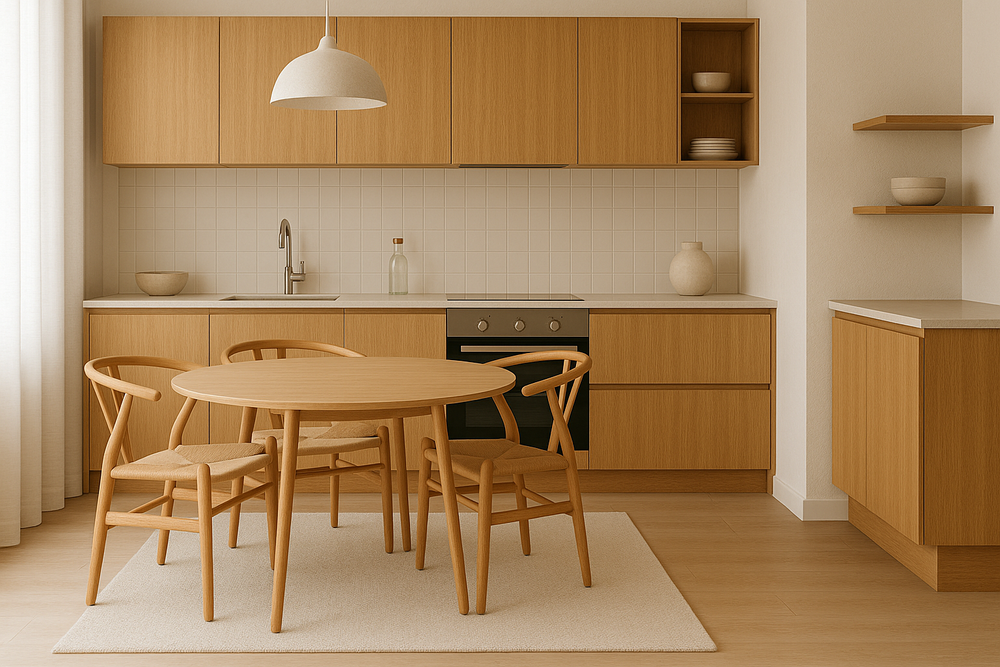Scandinavian Design & Mental Health: Why Less Really Is More
When life feels chaotic, your space shouldn’t be. That’s the quiet promise behind Scandinavian design. Rooted in simplicity and functionality, this aesthetic offers more than just good taste—it supports mental clarity, comfort, and calm.
But how does a minimalist design philosophy tie into mental health? More than you might think.
The Essence of Scandinavian Design
Scandinavian design emerged in the mid-20th century from the Nordic countries—Denmark, Sweden, Norway, Finland, and Iceland. The style took hold with its emphasis on clean lines, muted tones, natural materials, and functional beauty.
At its core, Scandinavian design isn’t about having less. It’s about having enough. Every item has a purpose. Every space has room to breathe.
Why a Clear Space Helps a Cluttered Mind
Our environments influence how we feel. Cluttered rooms can increase stress and make it harder to focus. A tidy, peaceful space signals safety and control to the brain.
Scandinavian design leans into that by:
Minimizing visual noise
Encouraging natural light
Using a limited, calming color palette
Prioritizing comfort through textures and layout
The result? A space that feels open, grounded, and safe—a setting that gives your nervous system room to relax.
Transitioning from Trend to Lifestyle
This design style isn’t about chasing Instagram perfection. It’s about shaping a lifestyle that favors presence, intention, and peace. And the more you live in a mindful space, the easier it becomes to act and think with clarity.
The beauty of Scandinavian interiors is that they breathe with you. On heavy days, they don’t overwhelm. On good ones, they amplify the light.
Key Principles That Support Mental Wellbeing
1. Function Over Fluff Scandinavian spaces are stripped of excess. Furniture is chosen not for show but for purpose. That shift helps the mind rest—there’s less to process, less to manage.
2. Nature as a Co-Designer You’ll see wood, stone, plants, wool—natural elements that ground the senses. These materials reconnect us with nature, which studies show reduces anxiety and boosts mood.
3. Neutral but Warm Tones Whites, greys, and earthy hues dominate the palette. These colors offer quiet background support rather than stimulation. They soothe instead of distract.
4. Cozy Minimalism Ever heard of hygge? It’s a Danish concept about coziness and contentment. Scandinavian design weaves it in with soft throws, ambient lighting, and spaces made for slowing down.
How It Impacts Your Mental Health
Living in or even visiting a Scandinavian-inspired space can:
Lower stress
Encourage mindfulness
Boost productivity (by eliminating distractions)
Make rest more restorative
Reduce decision fatigue
These benefits aren’t abstract. They show up in your sleep, your focus, your mood. A home that nurtures you makes it easier to nurture yourself.
Transitioning Your Own Space
You don’t need to start from scratch or buy designer furniture. To bring some Scandinavian calm into your home, start small.
Try this:
Clear one surface. Keep only what brings value or beauty.
Let more natural light in. Ditch the heavy curtains.
Add plants. Even a small one can lift your mood.
Choose cozy textures: a knit blanket, a soft rug.
Use neutral colors to calm visual noise.
The goal isn’t perfection. Its intention. Let every change be an act of self-care.
When “Less” Feels Like More
Here’s the magic: when your environment is uncluttered, your thoughts slow down. You notice more. You breathe deeper. You make space—not just on your shelves, but in your life.
That’s the hidden genius behind the “less is more” mantra. It's not about deprivation. It’s about making room for peace.
Beyond Interiors: A Scandinavian State of Mind
Scandinavian culture doesn’t just show up in furniture stores. It’s a mindset. Slowness is embraced. Rest is honored. Community and balance are valued.
This holistic approach to lifestyle can be incredibly healing in a fast-paced world. When you blend Scandinavian design with that kind of mindset, your home becomes a soft landing—not another stressor.
Final Thoughts
Design isn't just how a space looks. It’s how a space feels. And when done thoughtfully, it becomes a quiet ally for your mental health.
Scandinavian design proves that simplicity isn’t a lack—it’s clarity. Its presence. It’s feeling well in your own space and skin.
So if your mind’s been busy and your heart tired, try simplifying your space. A little less clutter might invite a lot more calm.
